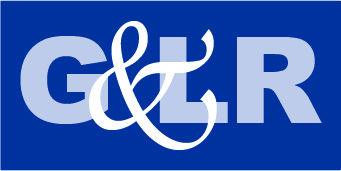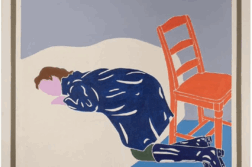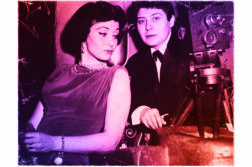THREE AMERICAN LESBIANS whose importance to activism and literature cannot be overstated died within a few months of each other this year. Each was responsible for a remarkable number of “firsts,” either individually or with associates, some of which are noted in what follows.
Madeline Davis was the author of Stonewall Nation (1971), one of the first gay liberation anthems to be published. An activist, writer, librarian, and educator, she died at age eighty on April 28th in Amherst, New York. Born and raised in Buffalo, New York, in 1940, the oldest of three in a warm, working-class family, Davis had numerous relationships with men and came out in the 1960s. In 1972, she was the first out lesbian to speak at the national convention of a major political party when she implored Democrats to include a gay rights plank in their platform. That same year, she co-developed and taught what was one of the first courses in lesbian history and culture in the U.S.
Several of her essays and an interview appear in the collection The Persistent Desire: A Femme-Butch Reader, edited by Joan Nestle (1992). In 1993 Davis co-authored, with Elizabeth Lapovsky Kennedy, Boots of Leather, Slippers of Gold: The History of a Lesbian Community. Using oral histories of 45 women, the book traces the story of the lesbian community in Buffalo, New York, from the mid-1930s to the early ‘60s. This book was the 1994 recipient of the Lambda Literary Award for Lesbian Studies and was the first comprehensive history of a working-class, butch-femme community. In 2001, Davis founded an archive, now at SUNY Buffalo, of that region’s LGBT history, detailed in the 2009 film, Swimming with Lesbians. Davis received a master’s degree in library science from SUNY Buffalo and was chief conservator and head of preservation in the Buffalo and Erie County Public Library System. She is survived by her wife, Wendy Smiley. They had married four times over the decades; the last one (and the first to be legally recognized) took place at Temple Beth Zion in Buffalo in 2011.
Kay Tobin Lahusen, who described herself as “the first openly gay photojournalist,” was also a gay rights activist. She died at age 91 on May 26th in West Chester, Pennsylvania. Born in Cincinnati, she was adopted by her grandparents shortly after her birth and raised, as one obituary noted, in an “intellectual household with strict Christian Science values.” She was attracted to women from her youngest years and refused to believe there was anything “wrong” with her. She went to Ohio State University, where she received a degree in English and originally planned to become a teacher. Instead, she moved to Boston and began to work as a researcher at The Christian Science Monitor while avidly seeking a girlfriend.
In 1961, she attended a Daughters of Bilitis (DOB) picnic, where she met Barbara Gittings (1932–2007), who was to become her partner for 46 years. Together, they organized numerous marches for gay equality in the 1960s, staging them at high-profile sites such as the Pentagon and Independence Hall in Philadelphia. She was a frequent contributor, under the name Kay Tobin, to the DOB newsletter, The Ladder, where Gittings was editor from 1963 to 1966. Using her photojournalist credentials, she was able to convince lesbians to allow their pictures to be taken for The Ladder’s cover, where they replaced the previous line drawings. She also suggested that The Ladder add the subtitle A Lesbian Review. As she stated in a 1993 interview, her goal was that of “taking our minority out from under wraps, and what you might call the normalization of gay.” As Kay Tobin, she coauthored, with Randy Wicker, The Gay Crusaders (1972); it was one of the first published collections of interviews with gay and lesbian activists. That year, she was one of the protestors who lobbied the American Psychiatric Association to remove homosexuality from its list of mental illnesses.
Lahusen’s photographs can be found in a wide variety of online and print media, including Love and Resistance: Out of the Closet into the Stonewall Era (2019). An extensive collection, the Barbara Gittings and Kay Tobin Lahusen Gay History Papers and Photographs, can be found in the archives of the New York Public Library.
Sally Miller Gearhart would introduce herself, after coming out, by stating: “I’m Sally Gearhart and I’m a lesbian.” She was an educator, a writer, and a political activist. She died in Ukiah, California, at age 91, on July 14th. Her childhood is described in contradictory ways by various news sources, but they agree that she spent her early life in rural Virginia and graduated from Sweet Briar College in Virginia, where she met her first girlfriend. She was fascinated by philosophy and religion, toying with the idea of becoming a member of the Lutheran clergy. She received her doctorate at the University of Illinois and taught communication arts in Texas and the Midwest.
In 1968, she began to attend consciousness-raising meetings and moved to San Francisco, becoming a member of the lesbian literary community. She met her partner Jane Gurko (who predeceased her) at San Francisco State University, where they were both on the faculty. Gearhart was the first out lesbian to obtain a tenure-track faculty position in the U.S. She campaigned for Harvey Milk and co-directed the Organization to Defeat the Briggs Initiative, which would have disqualified all gay and lesbian teachers based solely on their sexual orientation. The initiative was defeated in 1978. Her best-known books were Loving Women / Loving Men: Gay Liberation and the Church (1974), co-edited with William R. Johnson, and The Wanderground: Stories of the Hill Women (1978), which has been reprinted numerous times and is considered standard reading in some women’s studies courses. According to a 1992 interview, Gearhart originally mimeographed twenty copies of it and distributed it among friends, where it “caught on like wildfire.” She was interviewed for the documentaries Word Is Out (1977) and The Life and Times of Harvey Milk (1984). Her papers are held at the University of Oregon–Eugene.




